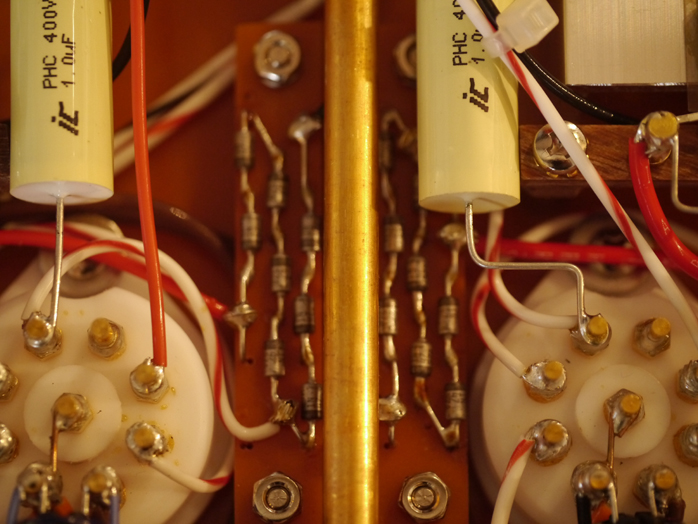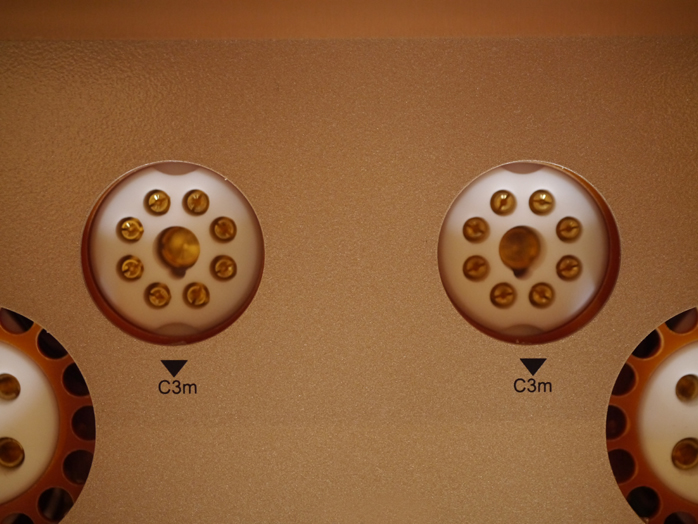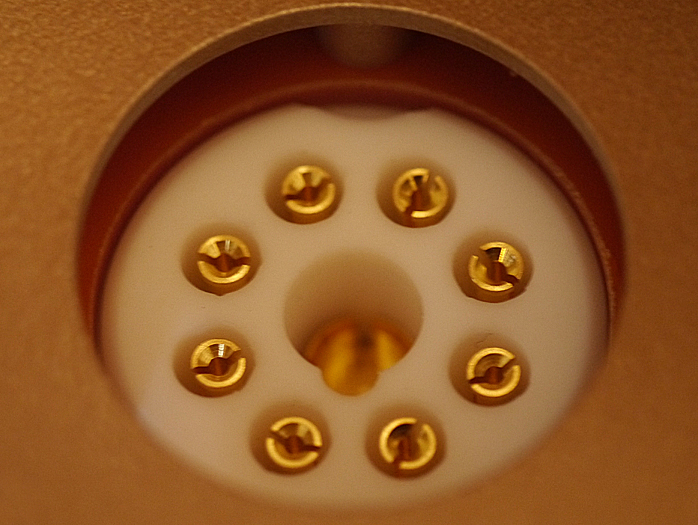This review page is supported in part by the sponsors whose ad banners are displayed below |
 |
 |
It's academic to wonder how measurements on amplitude, phase and impulse response, square waves, total harmonic distortion and such could ever explain this perfectly audible phenomenon. Push/pull tube amps don't exhibit it. Wherever negative feedback is adjustable it diminishes it. We somehow perceive this Chopin factor by how sounds connect over time; by how decays linger rather than how rapidly transients rise. Here one is often handed the aha! Duke Ellington song title It don't mean a thing if it ain't got that swing. And really, there's something very relevant to it. Greater rhythmic looseness. Higher temporal spontaneity. Playing outside the box. It's the difference between street and conservatory. It's the difference between Stochelo Rosenberg, Joscho Stefan and Romane. All three are celebrated Manouche Jazz guitarists in the Django Reinhardt vein. The Belgian swings freely, the German's perfectionism feels more metronomic. By contrast the Frenchman Romane seems technically sloppiest (he'd measure the worst). Yet his swing is the most infectious of the lot. Grooviest.
|
 |
One could riff endlessly on this thematic but the point is made. Compared to my measurably and technically superior SIT amps, the Yamamoto played its own trump card. Those sensitive to its markings might consider it the royal flush and in turn forgive the higher noise, diminished bandwidth and weakened bass control.
|
 |
Much shall depend on the associated speaker and the type of music you focus on. It's no secret that musically benign 2nd-order distortion is most attractive on structurally simple material whilst it gets more cloying and opaque as complexity increases. If you focus on tone and flow, the A-014 very much speaks your language. If your contact high comes from transient speed and bell-like clarity, an equivalent transistor amp will be superior.
|
 |
Yamamoto's denuded C3m pentodes lack the guide pin of the removed metal casing. This is counteracted by a clear silkscreen marker Yamamoto placed on their glass. Be careful to properly align their arrows with the silkscreen markers on the sockets.
|
|
|
It's always a matter of degrees and how things add up within the hifi chain. With a quicksilvery Rethm or Voxativ widebander which is innately lit up and ultra quick, the Yamamoto's slightly heavier lazier mien should make for a lovely combo. With the Druid V's darker and innately very dense voicing the A-014 enhanced the same attributes. Impulsiveness mellowed but tone fattened up further and colors saturated into even deeper vibrancy like a flushed runner catching his breath.
|
 |
With the fatter 300B pins facing forward, most power triodes should have their brand and logo markings on the base and glass envelope agreeably turned toward the viewer.
|
 |
Emission Labs vs. Takatsuki. How would the Takatsuki's underground reputation as the new/better Western Electric manifest? On Miguel Poveda's Coplas del Querer,
the Japanese triodes' more sinuous suppleness in how massed violins were luxuriated in clearly had my vote. On a Niño Josele Flamenco crossover track the Czechs' burlier punchier character and greater presence-region fire suited that music's rhythmically charged tension better. With its more relaxed ease and softness, the Takatsuki ruled in the fluidity stakes. Meanwhile the Emission Labs XLS had more crunch, snarl, mass and tension. |
|
|
This followed a much earlier division of various 300Bs where I had created two arbitrary schools or classes to distinguish core flavors: vintage (Western Electric, Full Music/TJ SE) and modern (EML, EAT, KR and Synergy Hifi).
The Takatsuki definitely followed the WE archetype as a classic or vintage 300B. The EML was more dynamic and robust but less elastic and thus more damped. Such options to flavor the sonic stew are most specific to single-ended triode amps and something transistor aficionados simply have no equivalent for.
|
 |
close-up of C3m socket
|
|
|
At the usual risk of endowing mechanical appliances with sentience, one could also speak of a youthful vs. older sound. When young we tend to be more fascinated with technical fireworks, speed and the enveloping exhilaration of loudness. As we get older our listening focus often tracks our biology to value slower and quieter where more is said with less. The Yamamoto A-014 perfectly suits this second mode and mood.
|
 |
It adds a few pounds to the waist line and moves a bit slower. In turn it paints with a fully developed color palette. Whilst its dynamic movements are more economical and less exuberant, it throws maximum weight behind the physicality of its images. This makes not for the uncanny presence of a recorded acoustic superimposed upon your own (for that it lacks illumination and airiness) but the thereness of apparent flesh'n'blood bodies in your really empty listening room. |
|
 |
With his latest A-014, Shigeki Yamamoto of the eponymous Japanese valve electronics house pays obeisance again to the 300B's reputation as the queen of triodes. Though its chassis color is paler than the deep red of prior models, this machine's tone density and color richness are truly intense. It's a mature comfort sound that paints in bold deep strokes with an emphasis on potent sonic mass. Things acquire weight. They grow earthy and grounded in materialism. But rather than seem rigid and stolid from such weighting, this downward physicality is embedded in supple elasticity. It articulates very fluidly like the peculiar elegance of a jovial fatter man who moves most gracefully. This is a machine for someone who's been around the block a few times to conclude that their favorite time of the year is autumn when the leaves are on fire, the hearth is lit and some honey-colored Sherry swirls seductively in a fine snifter... |
|
|
|
Shigeki Yamamoto responds:
About the remaining hum, this changes with the heater current of the
300B to be used.
Since the EML300BXLS has higher current, other vacuum tubes will generate different hum levels.
Because the A-014 is adjusted stock for the EML300BXLS, other tube types can produce more hum. If we know what type of tube a customer wishes to use, we can optimize the amplifier for lowest hum with that tube.
Click next for Frederic's 2nd-opinion report.
|
 |
  |
|
 |